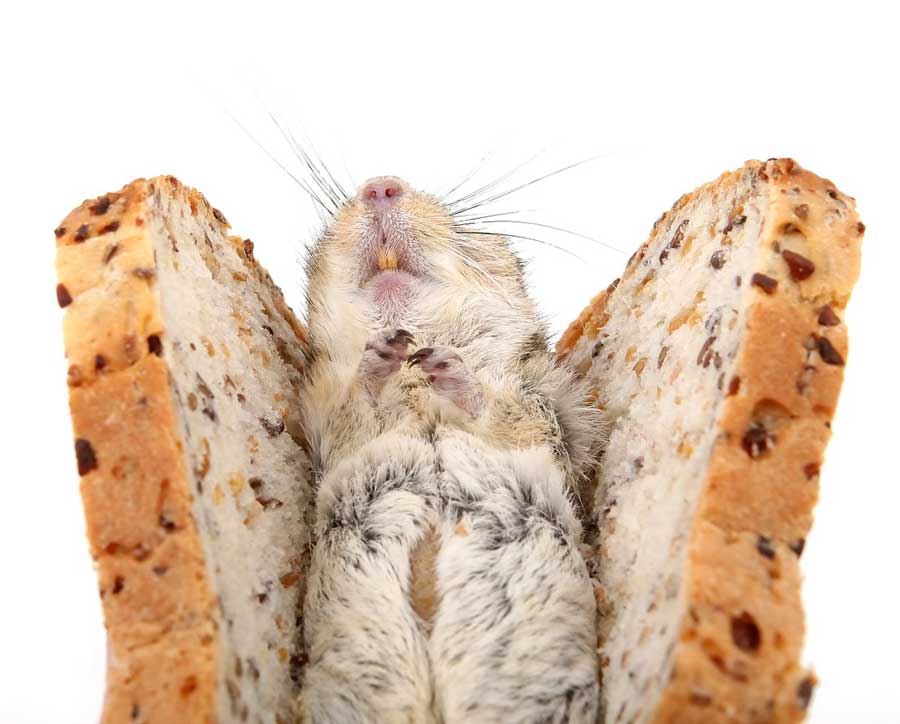Hamster diet
Hamsters are omnivores. They can eat everything from plants to meat. But there are things that hamsters should not have. Those foods are hard to digest and in some cases result in death. They contain acid. Let's take a look at some of them.
Things that you should avoid feeding your hamster
- fruit seeds or peels – apple, grapes, strawberry, etc
- onions, garlic, peppers, spices
- high-fat content foods
- anything unwashed like unwashed fruits or vegetables
- Lemon, orange, Clementine, grapefruit, etc.
- any part of a tomato
- chocolate, and anything sweet: they could cause diabetes
- any part of a rhubarb
- celery or very stringy/fibery foods like cabbage
- anything containing added sugar or salt
- raw potato or beans
- Yeast in bread
- Alcohol (beer and wine)
- almonds and apricot pits
|
 |
Things that you can feed your hamster
Hamsters do not require a lot of different types of foods. However, your pet does need a high-quality pellet as a main diet to meet their nutritional needs. The easiest and safest thing to feed your hamster is a complete meal that you can find at a pet shop or store. Pellets are easy to find and are complete in nutrients. In addition to pellets and seeds, you can feed your hamsters other treats mentioned in the below. However, treats should never include more than 10% of your pet's overall diet.
Grains: they are primary for hamsters. About a tablespoonful daily should be provided for hamsters. Grains contain protein and carbohydrates.
Hint: Do not overfeed fatty nuts (peanuts and sunflower seeds) since they cause obesity.
Protein: boiled egg white, boiled chicken and turkey, mealworms and dairy are some good sources of protein.
Attention: do not feed your hamster large pieces of food. In case of feeding them egg or meat, unsalted and unseasoned pieces should be fed. Do not ever feed them raw protein. Digesting them will be very difficult.
Vegetables and Legumes: spinach, watercress, lettuce, kale, cucumber, zucchini, carrots and sweet cooked potato, cooked asparagus, broccoli and cauliflower are the kinds of vegetables that your pet can eat. Dwarf hamsters should not use them very often.
Pasta and bread: Feed your hamster pasta, bread and rice. The creature needs carbohydrate but only in small quantities. Feed a hamster sugar-free and salt-free bread, dry grains, cooked brown rice, cooked wholegrain pasta, corn flakes, oat flakes and unsweetened biscuits.
Nuts and seeds: dried sunflower and pumpkin seeds, peanuts, hazelnuts, walnuts, plain chestnuts and sesame seeds are needed too.
Attention: As nuts and seeds have a high fat content, don’t feed too many or too often to your hamster. Besides; almonds are toxic. Stay away from them.
Fruits: They include peeled and cored apples and pears, strawberries, small banana slices, peeled grapes without seeds, dried dates and figs, raisins, blueberries, blackberries, raspberries and cherries without seeds. Remove any vegetables or fruits that are not eaten within 24 hours.
Attention: keep the hamster away from citrus fruits. The citrus oil is toxic for hamsters.
Timothy hay: Hay is hand selected to ensure the long fiber strands and proper leaf to stem ratio to support digestive health. Timothy Hay is grown in the ideal ecological location for moisture and climate control and is then stored in a protected environment to ensure the quality and superior nutritional values are maintained. Timothy Hay is ideal for animals over 7 months of age because it is higher in fiber to support digestive health and lower in protein and calcium to support urinary heath.
Clean, fresh, filtered, chlorine-free water : hamsters can drink tap water too, on the condition that it is healthy. Serve your hamster the water that you and your family drink. So the best option for your pet is filtered water in order to ensure minimal contamination.
Foods that hamsters are the most attracted to
The favorite foods of hamsters include: cheese, cooked beans, cucumbers, apples, leafy vegetables, rice, carrots, toasted bread, dog biscuits, etc. Roborovskis love Chinese cabbage, sweet corn and birdseed. On the other hand, Syrian hamsters like a wide range of fruits, grains and vegetables. Hamsters like to pick out the tasty fattening food first. Most of the time, sunflower seeds are eaten first and then less tasty and fatty seeds. It is crucial that you provide a well-balanced diet. Do not let them eat just they love.
The quantity of feeding your hamster
The amount depends on their size and weight but generally they eat one or two teaspoons of dry food mix per day. If your hammy is hiding too much of its food, then try to feed it less than that. Giving your hamster any more food than that may lead to hoarding the food. If it eats the food all at once, then you may have to increase the quantity. But what happens if you overfeed your hamster? The first danger is obesity. They definitely look cute but the danger cannot be overlooked. Hamsters are active rodents. They always run and move around. If they become fat, they won't be able to do so. Thus, less activity leads to the decrease of lifespan.
If your hamster is not eating, try to change its diet. Maybe the creature likes more flavored treats or pellets. If it does not touch dry food, try vegetables like broccoli, one asparagus, and a small kale leaf. If vegetables do not work either, feed it meat. They never reject meat. You go on with the things that it likes.
